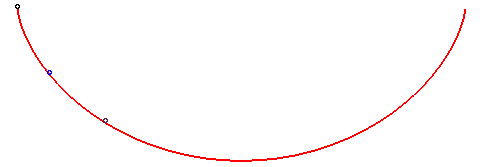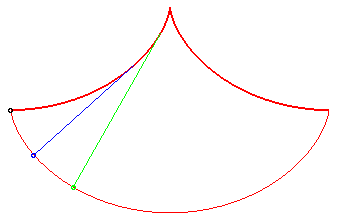ISOCHRONOUS CURVE OF HUYGENS

| next curve | previous curve | 2D curves | 3D curves | surfaces | fractals | polyhedra |
ISOCHRONOUS CURVE OF HUYGENS

| Property of the cycloid discovered by Huygens in 1673. |
The isochronous curve of Huygens is the curve such that
a massive point travelling along it without friction has a periodic motion
the period of which is independent from the initial position; the solution
is an arch of a cycloid the cuspidal
points of which are oriented towards the top; the fact that it is isochronous
comes from the fact that it is tautochronous.
The period of the movement is
where L is the sagitta of the cycloid.
The cycloidal
pendulum of Huygens below uses this property and the fact that the
evolute of a cycloid is an
equal cycloid. It is interesting because of its oscillation period of T
= , independent
from the amplitude, as opposed to the free pendulum only the "small" oscillations
of which can be considered as having the period T.

In this problem posed by Huygens, all the points reach
the bottommost point at the same time; Galileo posed the same problem,
but for massive points moving on linear stands: see synchronous
curve.
See also the isochronous
curve of Leibniz and the isochronous
curve of Varignon for another type of isochronous property, and at
synodal curve,
brachistochrone
curve and tautochronous
curve.
| next curve | previous curve | 2D curves | 3D curves | surfaces | fractals | polyhedra |
© Robert FERRÉOL 2017